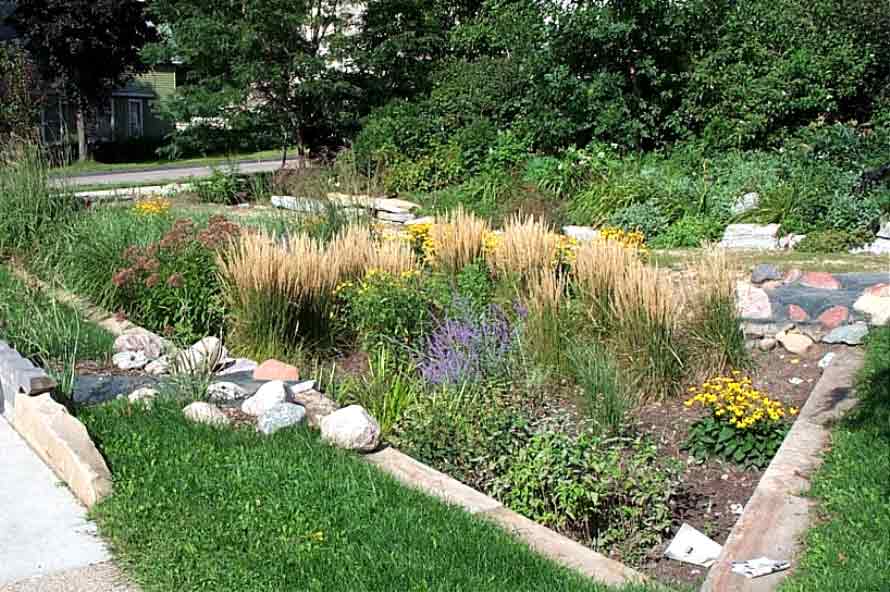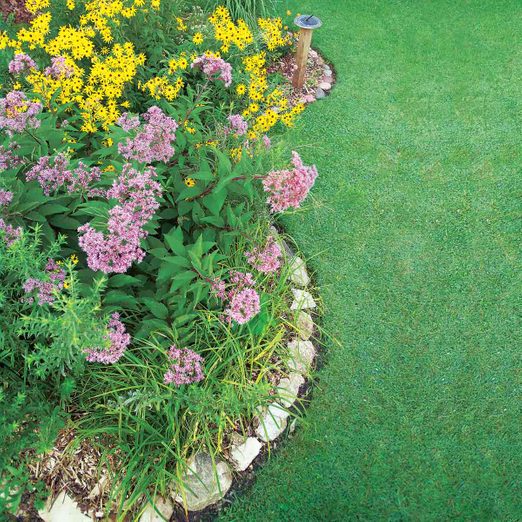what is a rain garden definition
A rain garden is a bowl-shaped depression designed as a garden to capture hold and absorb rainwater. A rain garden is a garden planted in a hole or depression that receives its water from the rain runoff of buildings roadways sidewalks or other nearby impervious structures.

Prairie Moon Nursery Seeds Aster Oolentangiensis Sky Blue Aster Aster Flower Rain Garden Violet Flower
A rain garden acts like a miniature native forest by collecting absorbing and filtering stormwater runoff from roof tops driveways patios and other areas that dont allow water to soak in.

. Rain gardens can reduce the amount of runoff from impervious surfaces by up to 98. Rain Gardens What are rain gardens. The soil cleans the water of pollutants before it enters the storm drain and empties into our bayous and bays.
Rain gardens are shallow constructed depressions that are planted with deep-rooted native plants and grasses. Rain gardens are effective in removing up to 90 of nutrients and chemicals and up to 80 of sediments from the rainwater. Rain gardens fill with a few inches of water.
Regardless of the size big or small each rain garden can make an impact. Rain gardens are a sustainable landscape solution for managing stormwater run-off and they range from simple ornamental gardens designed to tolerate water in low-lying swales to bioswales that naturally filter water and more robust green infrastructure that removes particulates and oils through water quality units. A rain garden is a garden of native shrubs perennials and flowers planted in a small depression which is generally formed on a natural slope.
Definition of Rain Gardens. They can be built at several scales and one may be just right for your home or neighborhood. Rain Gardens Wet Spots And The Native Plants That Love Em Native Plants Plants Rain Garden The Rain Chain Rain Garden Rain Chain Water Feature Rain Chain.
A typical rain garden for a residential home or small building is between 100 and 400 square feet. A rain garden is your individual way to practice environmental stewardship. Most ordinances such as those citied below include a definition for rain garden This allows the locality to control or limit what are acceptable types of rain gardens.
A rain garden is a planted depression or a hole that allows rainwater runoff from impervious urban areas like roofs driveways walkways parking lots and compacted lawn areas the opportunity to be absorbed. By giving rainwater a place to go this kind of garden reduces erosion from rainwater runoff and it significantly reduces or eliminates the need to water the plants on a regular basis. Rain gardens slow the flow of rainwater from roofs sidewalks streets parking lots and other impervious surfaces allowing the water to penetrate the soil.
Rain gardens also called bioretention facilities are one of a variety of practices designed to increase rain runoff reabsortion by the soilThey can also be used to treat polluted stormwater runoffRain gardens are designed landscape sites that reduce the flow rate total quantity and pollutant load of runoff from impervious urban areas like roofs driveways walkways parking. A rain garden is a beautiful and effective way to clean polluted stormwater runoff. They are strategically located to capture r u n o ff from impervious surfaces such as roofs and streets.
A rain garden is a garden of native shrubs perennials and flowers planted in a small depression which is generally formed on a natural slope. Rain gardens fill with a few inches of water after a storm and then water filters. A rain garden is a garden planted in a hole or depression that receives its water from the rain runoff of buildings roadways sidewalks or other nearby impervious structures.
It is designed to temporarily hold and soak in rain water runoff that flows from roofs driveways patios or lawns. A rain garden is a planted shallow depression in the landscape that collects and soaks up rainwater runoff from paved areas roofs and the surrounding landscapes. Rain gardens are small shallow sunken areas of plantings that collect stormwater runoff from roofs streets and sidewalks.
The primary purpose of a rain garden is to reduce runoff so it should be placed in a location enabling the garden to collect water. Rain garden ordinances can be designed in several ways. In its most simple design a rain garden is a type of garden strategically located so that it can intercept storm water and allow it to soak into the soil.
Rain gardens are a beautiful and colorful way for homeowners businesses and municipalities to help ease storm water problems. First your rain garden needs to be planted in a shallow depression. They are strategically located to capture runoff from hard surfaces such as a driveway parking area sidewalk or streets.
You can select the location of your rain garden by first taking a good look at your property and determining where your storm water goes where it runs off where there may be wet spots in your yard. Rain gardens are depressional areas landscaped with perennial flowers and native vegetation that soak up r a i n w a t e r. A rain garden offers the opportunity to manage rainwater runoff from hard surfaces after downpours by planting an attractive low maintenance wildlife-friendly space.
This reduces rain runoff by. Also known as bioretention cells they are designed to mimic the natural ways water flows over and absorbs into land to reduce stormwater pollution. Also known as bioretention cells they are designed to mimic the natural ways water flows over and absorbs into land to reduce stormwater pollution.
What is a rain garden. A rain garden is no more than a shallow depression planted with deep-rooted native plants and positioned near a runoff source. What is a Rain Garden.
These specialized gardens have features that make them distinct from your typical flower bed. Directly to rain garden or run over pervious area first Drains to turf sloped to garden. Rain gardens are shaped longer than they are wide and positioned perpendicular to the slope of the land in order to catch the maximum amount of rainfall.
A rain garden is purposefully situated at a relatively lower spot on a property so it can receive runoff after it rains. What is a rain garden definition Saturday February 26 2022 Edit.
Rain Gardens Everett Wa Official Website
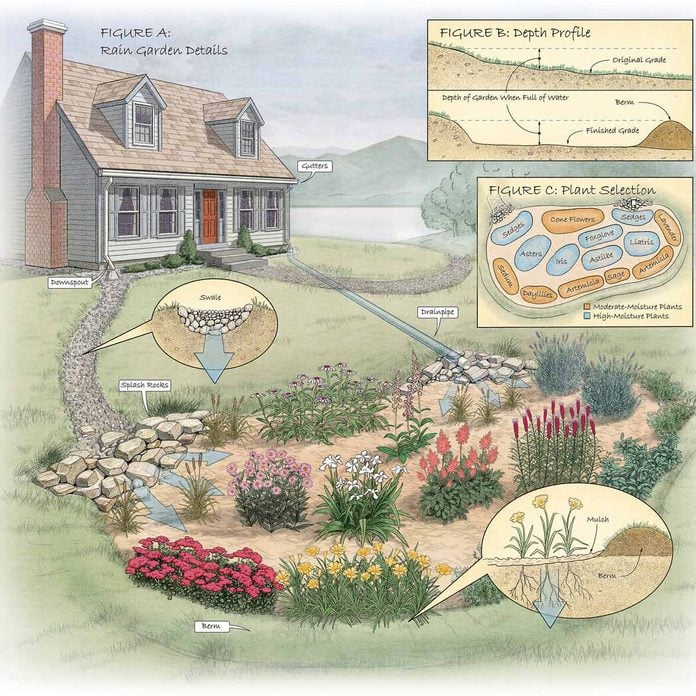
How To Build A Rain Garden In Your Yard Diy

Green Infrastructure Rain Gardens Thewatershed Org

To Manage Stormwater Sustainably Understand Your Site Follow This Guide To Learn How Water Moves Through Y Rain Garden Design Rain Garden Traditional Landscape

Rain Gardens Wet Spots And The Native Plants That Love Em Native Plants Plants Rain Garden

Photos Of Rain Gardens Terrace Rain Gardens Stormwater Engineering City Of Madison Wisconsin Rain Garden Stormwater Ways To Save Water

Rain Garden The Vertical Garden That Uses No Power Vertical Garden Rain Garden Vertical Garden Wall
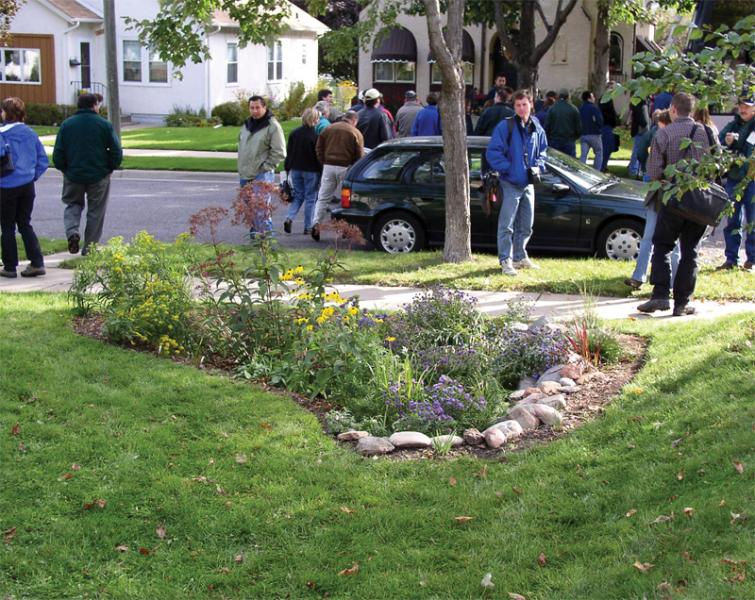
Rain Gardens Design And Installation Extension

Rain Garden Green Solutions Native Garden

12 Benefits Of A Rain Garden Lawn Care Blog Lawn Love

Rain Gardens Design And Installation Extension
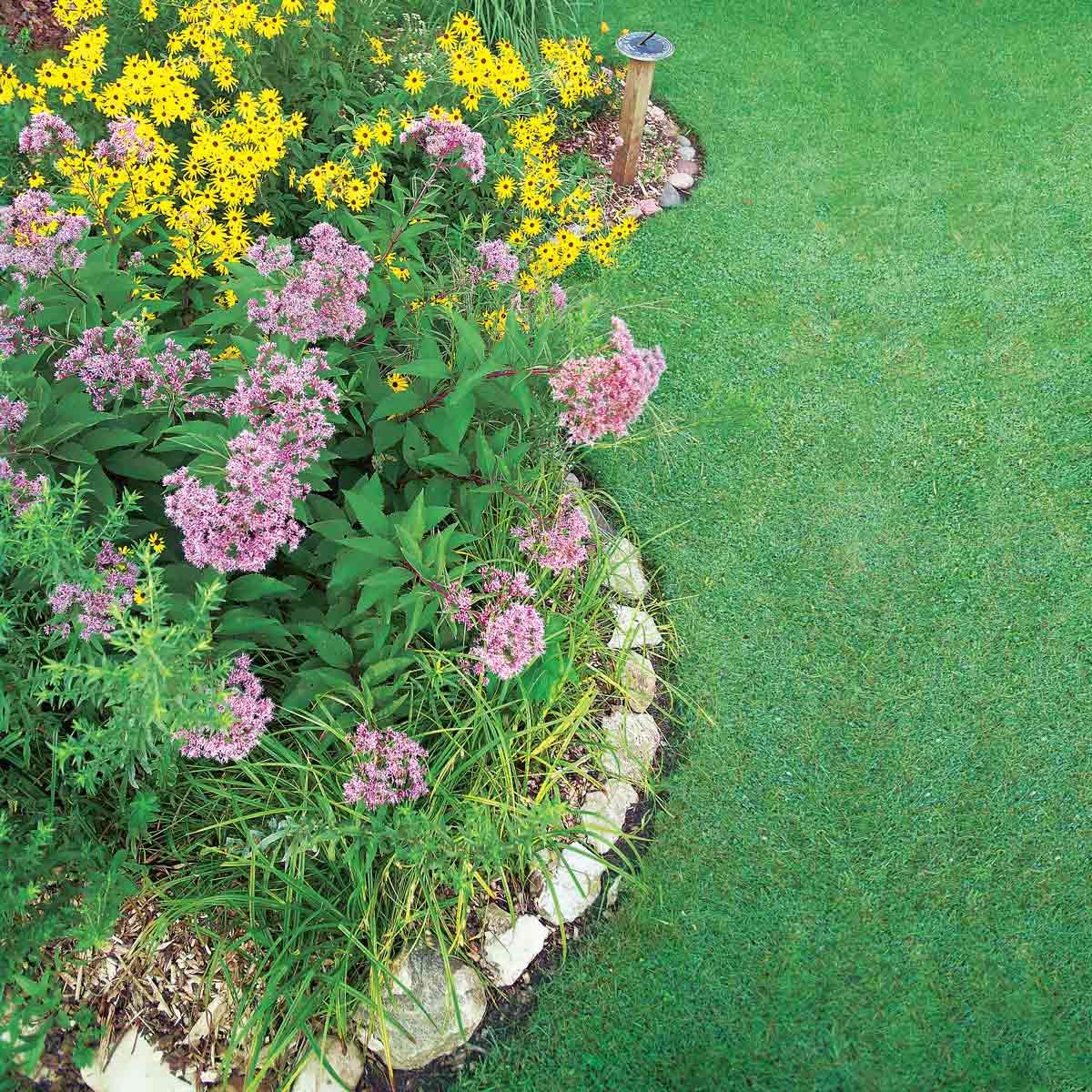
How To Build A Rain Garden In Your Yard Diy

Green Infrastructure Rain Gardens Thewatershed Org

Midwest Hardscape December 2010 Rain Garden Hardscape Landscaping Retaining Walls

12 Benefits Of A Rain Garden Lawn Care Blog Lawn Love

Rain Gardens And Bridge Between Rain Garden Rain Garden Design Garden Design
